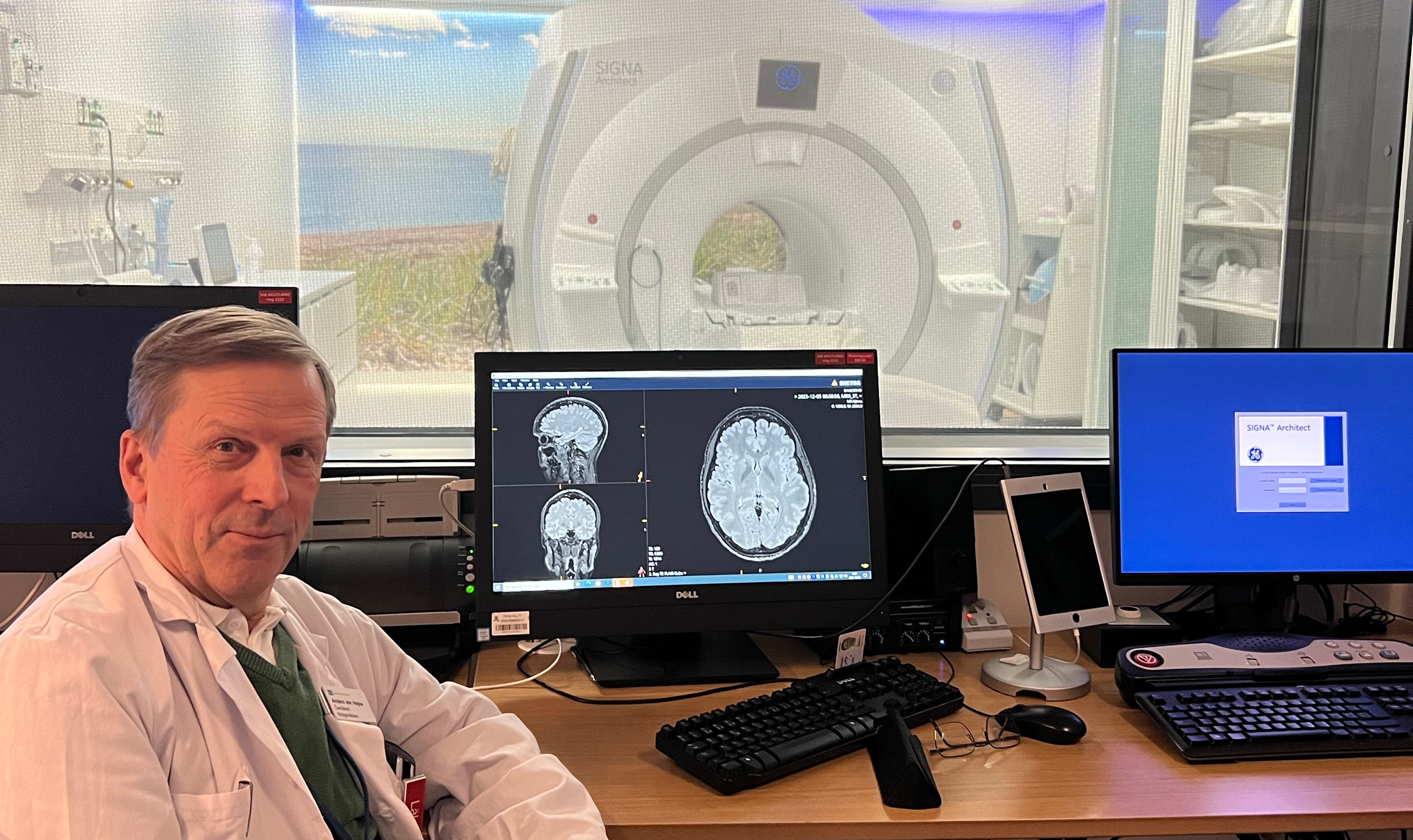There was not a trace of hesitation when Anders von Heijne, head of the MRI department at Danderyd Hospital in Stockholm, Sweden, was asked to conclude on his experience working with the features built into the latest software upgrade for 1.5T MRI scanners from GE HealthCare.
“I have worked with MRI as a radiologist for more than 30 years, and I have no doubt that AIR™ Recon DL marks the single biggest leap forward for MRI imaging that I’ve seen during my career. It’s simply that good.”
In 2023, Danderyd became one of the first three hospitals in Europe to have the AIR™ Recon DL MR30 software upgrade implemented on a 1.5T MRI scanner as part of a GE HealthCare pilot programme. The substantial upgrade brings a long list of improvements, including the much-anticipated extension of AIR™ Recon DL to 3D as well as the motion-insensitive PROPELLER-feature, and even additional applications such as DTI, FSE Flex, CartiGram, free-breathing phase sensitive MDE and T1 mapping for cardiac imaging.
Improved image quality, better diagnostics, and faster examinations
”Even though the signal on a 3.0T scanner is twice as strong compared to a 1.5T, with this update a 1.5T can produce images of as good quality, if not better, than a 3.0T was able to (without AIR™ Recon DL)."
This means that you can confidently scan even complex neuro cases on 1.5 T, giving you more scheduling flexibility.
“Overall, the upgrade produces value in terms of better image quality, better diagnostics, and faster examinations. On top of that, you will be able to use your existing scanners longer and postpone investments in new machines for maybe five years or more. In our MRI department, we will now upgrade our other two systems from GE,” continues Anders von Heijne.
Complicated cases call for high image quality
Danderyd Hospital has one of the largest emergency rooms in Sweden, receiving more than 6500 patients per month of which a large proportion are serious and complicated cases that require radiological examinations for proper diagnosis. Complicated cases mean that Anders and his colleagues are dependent on high image quality.
”In general, diagnosis using radiology is of course much easier when you have good image quality, but this is especially true in the more complex cases where the changes you are looking for can be very subtle. Better image quality also often means you don’t need to scan the patient multiple times to be sure of your results, allowing you to do more exams per day.”
AI based de-noising technology
At the core of the upgrade is a pioneering, deep-learning based reconstruction algorithm that improves the signal-to-noise ratio and image sharpness. This not only shortens the scan times but also improves the image quality at the foundational level by making use of the raw data to remove image noise and ringing.
“Image noise has always been a big issue in MRI, so this is where the AI technology can really make a significant change, most importantly perhaps when we talk about 3D imaging that remains a key component to most clinical MR exams. In short it means that we can do thinner sections with a higher resolution without compromising on the image quality,” says Anders von Heijne.
Motion-insensitive technology incredibly helpful with challenging anatomies
Another key improvement, Anders von Heijne points out, is that the upgrade is compatible with the GE HealthCare’s PROPELLER-technology that allows for motion-insensitive and minimal-distortion diffusion-weighted imaging, making it even easier to diagnose challenging anatomies with a multitude of contrasts.
“We get patients that breath very heavily or for many different other reasons find it difficult to lie still for 30 minutes, such as patients with Parkinson’s. In these cases, the PROPELLER-technology works brilliantly to create useful images. This is incredibly helpful, also in the cases where patients have a prosthesis implant which can cause artefacts in a regular MRI image. Here, the technology can compensate and make you able to see better, if a patient with i.e., an implant in the hip has signs of prostate cancer or not,” says Anders von Heijne while adding that the user interface and ease of use hasn’t changed compared to before the upgrade.
GE HealthCare has a long legacy of offering upgrades and improving performance to their installed systems. With Upgrade and Lift programs available, AIR™ Recon DL is compatible with the vast majority of GE HealthCare’s 1.5T, 3.0T and 7.0T systems.
Anders von Heijne and Danderyd Hospital does not have any contractual relationship beyond the fact of being end user of a GE HealthCare medical device.


